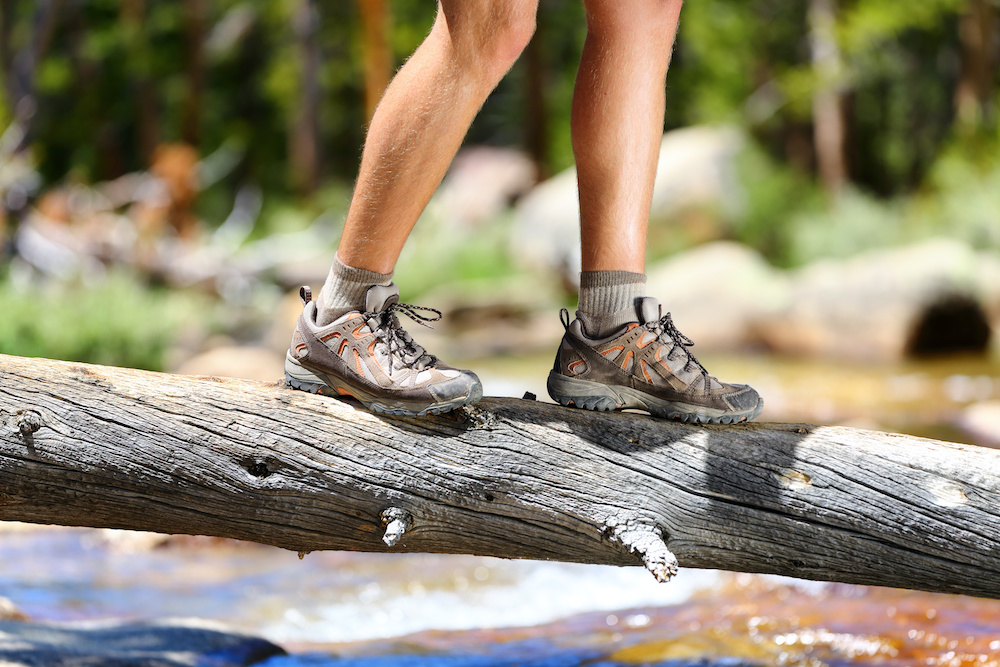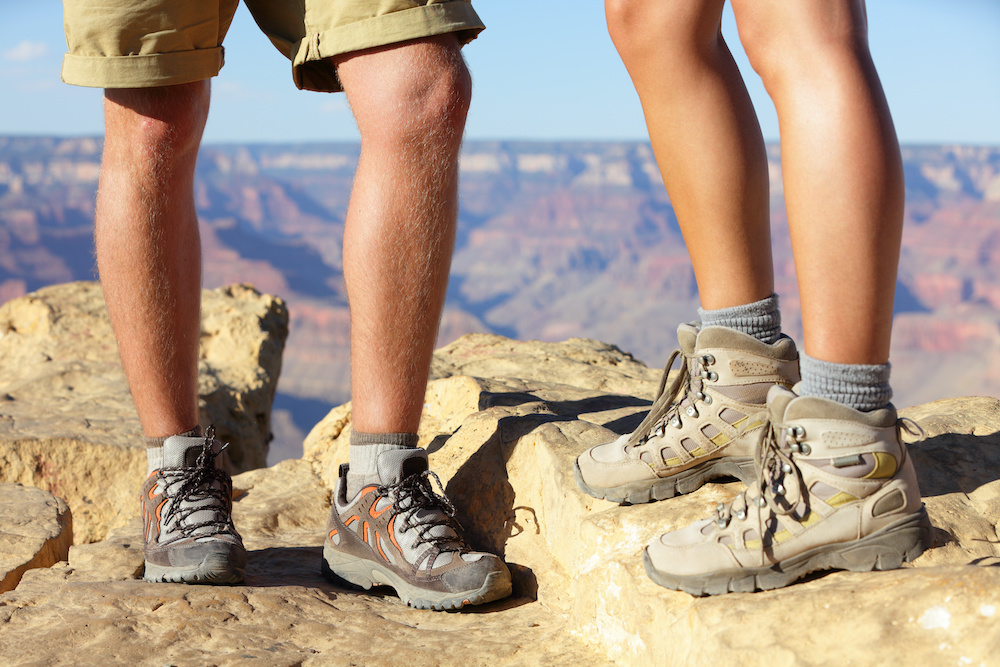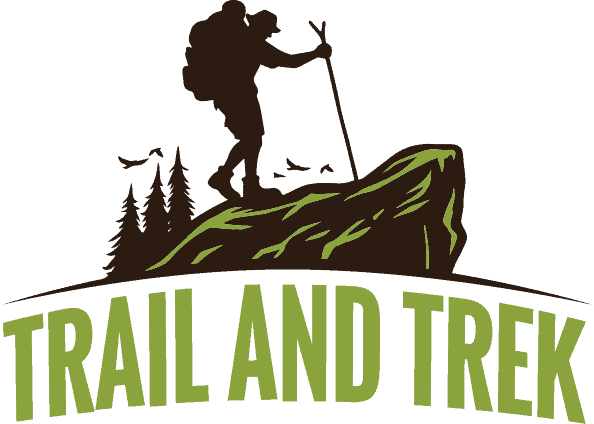
Have you ever experienced blisters on your feet after coming back from hiking?
The reason is probably your hiking shoes, which are not the right size.
So how should hiking shoes fit?
Shoes are an essential part of your hiking gear, so they should be comfortable and long-lasting.
Finding a shoe size that fits you perfectly is not an easy task because an ill-fit shoe will cause your feet greater misery while hiking.
You must have heard people saying to buy a shoe one size larger than the size which fits you perfectly.
Before you buy larger shoes, though, make sure to do your research and ensure the comfort level. Otherwise, you may get an injury.
How Should Hiking Shoes Fit?
Whenever you go out to buy your hiking shoes, make sure they are not tight, and you can easily wiggle your toes.
The best time for buying hiking shoes is after a full day of walking because, at that time, your feet are swelled, and that size will be suitable.
Knowing about your feet size, including feet length and width, also helps in buying an accurate size.
If you are wondering why measuring the feet length and width is important, the reason is different manufacturers make shoes with different sizes.
Even with a slight difference of an inch between your actual size and chosen size, your feet will bear the consequences.
Also, it is better to wear socks you intend to wear during hiking while buying shoes.
Tips to Buy Hiking Shoes
There is a great variety of hiking shoes in the market. Finding one with your size is a daunting task, so always keep in mind the following tips:
1. Prioritize Fit
Excellent hiking shoes with lesser features should be a top priority for you.
There is no point in buying a shoe with bells and whistles when it doesn't fit you properly.
Good shoes that fit you perfectly hold your foot in place securely and saves you from hotshots.
2. Choose the Right Size
We have heard many people advise others always to buy one size larger hiking shoes than the one which fits perfectly.
The statement seems strange at first, but the logic behind it will make you think about it.
The reason is the perfect fit shoes will provide great comfort when you hike uphill trails, but the situation is not the same when you travel the trail downhill.
When there is a shift inside the feet, the toes touch the end of the shoes.
That often results in an injury or discomfort.
Instead of buying a larger shoe, it is better to wear it in the store before buying it.
If the large-sized shoe feels more comfortable while walking than your fit shoes, you can go for it!
If you feel there is no need to buy a large size, you can skip it.
No matter the shoe size, your comfort matters the most.
3. Wear Suitable Socks
Wearing a pair of socks that are weather appropriate is significant.
You don’t have to buy woolen socks if you are going hiking in the summer, so you should wear thin, summer-appropriate socks while purchasing shoes.
In winter, we will recommend wearing woolen socks, preferably Merino wool.
However, don’t wear too thick socks since they will affect the fit of your shoes.
Also, wear shoes which you usually wear while buying hiking shoes so that the size doesn’t vary.
4. Buy Online With Caution
Online shopping is always a great option while purchasing anything, but when buying hiking shoes online, make sure you're buying a pair with a 100% right fit.
It is also a good idea to visit the store yourself so that you can try the shoes on the spot whether they fit or not.
Although, for repeated purchases, you can always consider purchasing online.
5. Walk in the Shoes
After you have decided to buy a certain pair of shoes, walk around the store wearing the shoes.
Try to walk for at least 20 minutes to make sure they are comfortable enough to walk on the trail.
Some stores have rocky incline ramp, which helps you experience how you will feel on the trail while wearing the shoes.
If you can't find the rocky incline ramp, you can climb stairs instead.
6. Take Your Time
You should never buy your hiking shoes in a hurry as they are an important part of your hiking gear.
Hiking shoes are expensive, and they have to be good. As such, it is better to make your decision when you have time in your hands.
7. Consider Water Resistance
You may not find any shoe brand which claims their shoes are water-resistant, so you must at least go for waterproof shoes.
That is because you may face rain or have to pass through a stream of water during hiking.
If you couldn't find a pair of waterproof shoes, consider buying gaiters to wear on your shoes for protection against water.
What Are the Different Types of Hiking Shoes?

Now you know how should hiking shoes fit, and that is: every shoe is different, and it will fit your foot differently.
We have talked about hiking shoes and how each one of them fits, so let's now look at the various types f hiking shoes.
1. Trail Runners
One of the most lightweight hiking shoes is trail runners. They resemble running shoes in features but looks different.
The trail runners have tread patterns on them, heal brakes, and a stiffer midsole. They won't give you blisters as they are very comfy.
Since the trail runners are lightweight, you can easily cover long distances wearing them.
Additionally, the shoes are super versatile and comfortable.
The major drawback of trail runners, though, is that they aren't durable, so they get easily damaged.
2. Light Hikers
A light hiker has almost every feature of a trail runner, and it overcomes the downsides of a trail runner.
The light hikers have excellent traction, a stiff sole, and tread patterns which ensure the durability of shoes in variable terrain.
As the name suggests, light hikers are lightweight and perfect for traditional hiking.
They are not only versatile but provide excellent protection against water, as well.
3. Approach Shoes
If you need a pair of shoes that can help you climb rock walls, tricky, and steep areas, approach shoes fit your criteria.
The shoes have a stiff midsole inside and a sticky rubber exterior.
Approach shoes are great for technical hiking as well as all-round hiking.
The best part about the shoes is the lacing system extends to the toes, which provides comfort and saves your feet from blisters.
However, since the outer part is rubber, it can not protect the shoes against water and mud; hence, they are not long-lasting.
4. Mid-Weight Hiking Boots
The mid-weight hiking boots are similar to a low hiking shoe, but it has additional features like ankle support and high cuffing.
The shoes not only offer excellent traction, durability, versatility, and a secure fit, but the stiffer midsole won't let your feet hurt for a more extended period.
The mid-weight hiking boots are a bit heavier than other hiking shoes, but their features make them stand out.
The shoes can cover vast distances without causing hotshots and blisters in your feet.
Moreover, they are durable and withstand all kinds of weather conditions.
5. Heavy Backpacking Boots
The robust and sturdy heavy backpacking boots can carry all sorts of weight and heavy material.
The stiff soles support your feet while the ankle stability lets you hike on rugged terrain without worrying about any foot injury.
Heavy backpacking boots are suitable only if you tend to carry heavyweight or go into the wild for days.
These boots are not recommended for light backpackers and day hikers.
Other Hiking Boots Wearing Tips
Apart from knowing how should a hiking shoe fit and how to get the right fit, here are some other things to keep in mind:
1. Take Your Orthotics
If your feet are aching, you can take orthotics with you on your hiking trip. Instead, you can take them for any emergency.
An orthotic is a medical device that you can wear inside your shoes due to any medical reasons such as aching due to running or walking.
The material of orthotics is plastic, gel, or form. They provide extra support for your feet, heels, and toes.
Orthotics are available everywhere, and they are not custom-designed, so you can wear any size.
People think orthotics are used to heal any foot disorder, which is wrong!
It can only provide support to your feet.
If you intend to wear an orthotic, make sure to take it with you before buying the shoes.
2. Break the Shoes
Whether you buy a perfect-fit pair of shoes or one large size shoes, both need to break-in.
Before going on a long trail, make your shoes comfortable enough.
The break-in time of every shoe depends upon its size. You can even use light runners straight out of the book while heavy boots will need days to break in.
Always buy your shoes a few days before going to the trail so that you can get enough time to break your shoes.
Here's how to break them in:
- You can wear your shoes most of the time at home while doing chores.
- Wear shoes with the same socks you will wear hiking.
- If you feel you want to change insole, then go for it. If you want to wear orthotics, wear it, as well.
- Don't limit yourself inside the home; you should walk around the park or block.
- Gradually increase the weight and miles since that's where serious break-in happens.
- Also, stay vigilant about the pain points. Your shoes will not be comfortable at first as the sole of the shoe is too stiff, but they should feel comfortable after some time of walking.
- If you feel pain in your heel or toes, don't ignore and stop walking. This is probably because you bought the wrong size. If you feel unbearable pain, it is better to see a doctor.
3. Change Factory Insoles
Insoles are like fillers, which help provide feet comfort and support. The heel cup helps to stabilize your foot.
Most of the time, the in-built insole of the shoes don’t provide much comfort, so you should change the factory insoles.
Insoles come in a variety of models that gives you the right amount of support, comfort, and fit.
If you face foot fatigue, sore foot, or hotshots, these are the signs that you need to change the insoles.
A good insole will protect your feet from these three common foot issues:
a. Collapsing Arch
The collapsing arch happens when the ankle rotates inward. As a result, the arch flattens.
Due to the collapsing arch, the efficiency of your stride decreases, and it takes you longer than usual to travel the miles.
It's the main reason for blisters when forefoot moves too much.
b. Heel Slippage
The reason behind heel slippage is a loose-fitting heel pocket.
The heel slippage causes the hot spots and blisters on your feet.
If you are facing this issue, an insole with a deep heel cup will be suitable for you. It will provide firm arch support as well.
c. Plantar Fasciitis
Plantar fasciitis is a foot disorder that gets worse when you don't treat a collapsing arch, and this is an excruciating condition.
It is a tendon inflammation that starts from your heal and connects to the ball of your foot.
It usually takes weeks to recover fully.
Final Verdict
If you didn't enjoy your last hiking, now you know the reason.
It is essential to do your research first and then visit the store to try them personally.
Besides, you can visit the store during off-hours when it's not too crowded.
Footwear is all about barter. You can't get everything in a single pair of shoes. Either you get the stability or durability.
Don't choose shoes based on color or design because at the end of the day, both are irrelevant.
Buying hiking shoes is a high investment that should be made wisely. Otherwise, your money goes to the drain.
